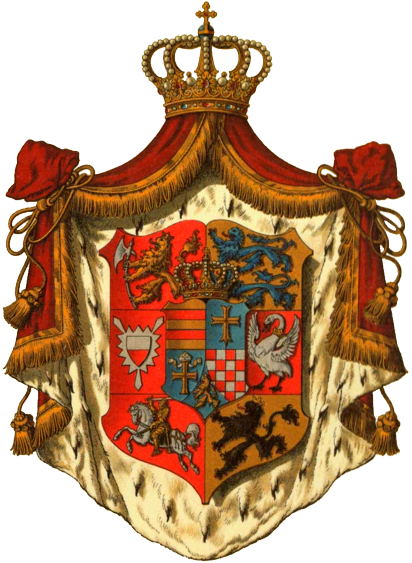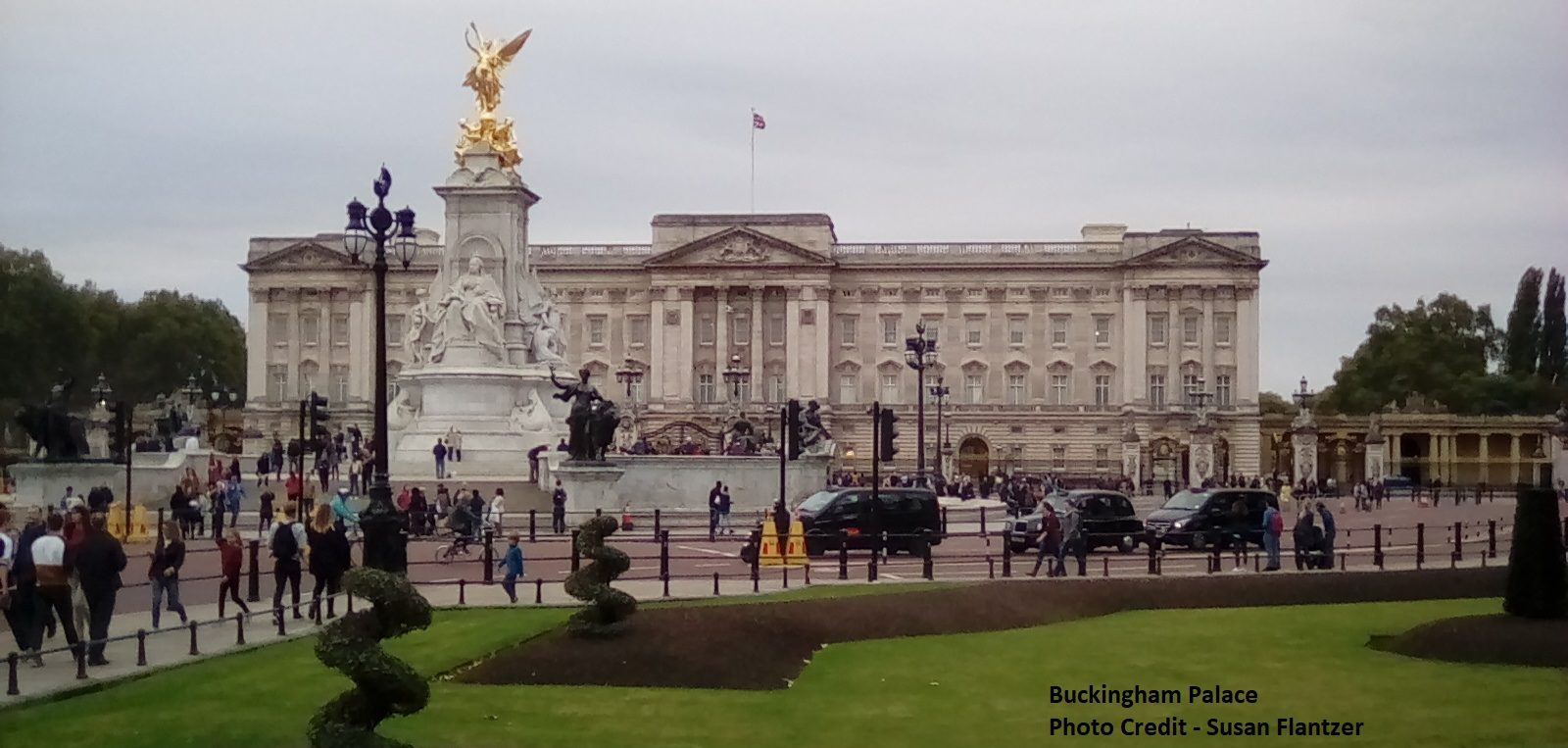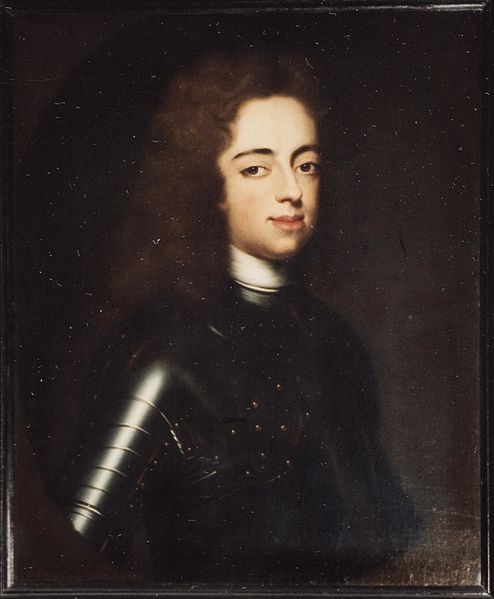by Scott Mehl © Unofficial Royalty 2018

Credit – Wikipedia
On March 21, 1929, the future King Olav V of Norway married Princess Märtha of Sweden at Oslo Cathedral in Norway. It was the first royal wedding in Norway in 340 years.
Olav’s Early Life

Olav with his parents, 1913. source: Wikipedia
Olav was born Prince Alexander of Denmark on July 2, 1903, at Appleton House on the Sandringham Estate in Norfolk, England. He was the only child of Prince Carl of Denmark and Princess Maud of Wales. In 1905, his father was elected King of Norway, taking the name Haakon VII. Prince Alexander took the name Olav and became Crown Prince. He attended the Norwegian Military Academy and studied law and economics at Balliol College, Oxford University. Olav also represented Norway in the 1928 Olympic Games in Amsterdam, winning a Gold Medal in sailing. He served in the Norwegian Armed Forces – both the navy and army – attaining the rank of Admiral of the Navy and General of the Army in 1939.
For more information about Olav see:
Märtha’s Early Life

Princess Martha (right) with her mother and sisters, c1910. source: Wikipedia
Princess Märtha was born on March 28, 1901, at the Hereditary Prince’s Palace in Stockholm, Sweden. She was the second child of Prince Carl of Sweden and Princess Ingeborg of Denmark. Her siblings included an elder sister Margaretha (later Princess Axel of Denmark); a younger sister Astrid (later Queen of the Belgians); and a younger brother Carl (later Prince Carl Bernadotte). Interestingly, at birth, she was also a Princess of Norway, as Sweden and Norway were in a personal union under the Swedish sovereigns. This union ended in 1905, just before her future husband’s father was elected as the new King of Norway.
Märtha never became Queen of Norway. She died from cancer before Olav became King of Norway.
For more information about Märtha see:
The Engagement

Official engagement photo. photo: Axel Malström, The Royal Court Photo Archives
As first cousins, Olav and Märtha had known each other since childhood, and in the late 1920s, they began a romantic relationship. They managed to keep the relationship private, with Olav often traveling to Sweden in disguise to see his future bride. While both were in Amsterdam in 1928 for the Summer Olympic Games (in which Olav was competing), they became secretly engaged. The following January, after Olav again traveled to Sweden under an assumed name, the engagement was officially announced on January 14, 1929. The announcement was met with great support and excitement in both Norway and Sweden.
Pre-Wedding Festivities

Princess Märtha being greeted by Crown Prince Olav upon her arrival in Oslo. photo: Brødrene Halvorsen, The Royal Court Photo Archives
In the weeks before the wedding, Olav traveled to Sweden where he and Märtha were guests of honor at several functions. Crown Prince Gustaf Adolf hosted a ball at the Royal Palace, and the city of Stockholm hosted a reception at the Stockholm Town Hall. On the Monday before the wedding, King Gustav V hosted a State Banquet at the palace, after which the couple and the bride’s family left to travel to Norway. Prince Olav took a separate train to Oslo so he could welcome Märtha and her parents upon their arrival the following day. After they arrived, the couple traveled by carriage through the streets of Oslo on their way to the Royal Palace, where they appeared on the balcony to greet the crowds of well-wishers who had gathered in the Palace Square. King Haakon VII hosted a ball at the palace that evening, and the following night, a gala performance was held at the National Theatre.
The Wedding Attendants

The Bride and Groom with their bridal party. photo: The Royal Court Photo Archives
The Duke of York (the future King George VI of the United Kingdom), a first cousin of Crown Prince Olav and second cousin of Princess Märtha, served as the groom’s best man. The bride had eight bridesmaids, four from Sweden and four from Norway. They were led by the bride’s first cousin once removed, Princess Ingrid of Sweden, and Miss Irmelin Nansen, the daughter of famed Norwegian explorer and humanitarian, Professor Fridtjof Nansen. The rest were daughters of prominent families associated with the Swedish and Norwegian courts. The bride’s nephews, Prince George and Prince Flemming of Denmark, served as her train bearers.
The Wedding Attire

The official wedding portrait. photo: E. Rude, The Royal Court Photo Archives
The bride wore a gown of white silver lamé, made in Paris, a gift from her uncle, King Gustav V of Sweden. The gown had a four-meter train that was embroidered with lilies and embellished with pearls and sequins. Her veil – of Brussels lace – extended nearly the full length of her train. She held her veil in place with a tiara of orange blossoms topped with a wreath of myrtle. She carried a large bouquet of white lilies.
The groom wore a full military uniform, adorned with the Collar and Star of the Norwegian Order of Saint Olav, the Sash and Star of the Swedish Order of the Seraphim, along with numerous medals and other decorations.
The Duke of York wore full uniform adorned with the Collar and Star of the Norwegian Order of Saint Olav, the Sash and Star of the British Order of the Garter, and the Necklet of the Order of Saint John of Jerusalem.
The bridesmaids wore white tea-length dresses and carried large bouquets of white flowers.
The Ceremony

photo: The Royal Court Photo Archives
Conducted by the Bishop of Oslo, Johan Lunde, the ceremony took place at 12:00 noon on March 21, 1929, at Olso Cathedral in Oslo, Norway. The 1,600 wedding guests included many government officials, foreign diplomats, prominent citizens from Norway and Sweden, and numerous relatives and friends of the couple. Surprisingly, other than the Swedish and Danish royal families, very few foreign royalty attended. The Duke and Duchess of York, representing King George V of the United Kingdom, were the most prominent royal guests.
Following the groom’s arrival, the immediate members of the royal families processed into the church to the Norwegian Student Choral Society singing Stenhammar’s “Sverige”. The bride then entered with her father, followed by her bridesmaids. The ceremony was simple and traditional, with the Bishop stating that the royal couple would have the same marriage service as any other Norwegian citizen. Loudspeakers had been set up outside the cathedral for the crowds gathered there, and there were loud cheers when the couple gave their “I Do’s”. The service ended with Händel’s “Hallelujah Chorus”, and two 21-gun salutes fired from Akershus Fortress. The couple led the carriage process back to the Royal Palace.
The Wedding Banquet and Honeymoon

photo: A.B. Wilse, The Royal Court Photo Archives
Following the ceremony, a luncheon for 200 guests was held at the Royal Palace. That evening, Olav and Märtha left Oslo and made their way to Sassnitz, Rugen Island, Prussia. From there, they made an unaccompanied trip by car through Europe to the French Riviera for the remainder of their honeymoon. The couple took up residence at the Skaugum Estate, recently purchased by Crown Prince Olav. Since then, the property has been the traditional residence of the Norwegian Crown Prince and his family.
Children

Olav and Märtha had three children; Credit – Wikipedia
Olav and Märtha had three children:
This article is the intellectual property of Unofficial Royalty and is NOT TO BE COPIED, EDITED, OR POSTED IN ANY FORM ON ANOTHER WEBSITE under any circumstances. It is permissible to use a link that directs to Unofficial Royalty.
























































